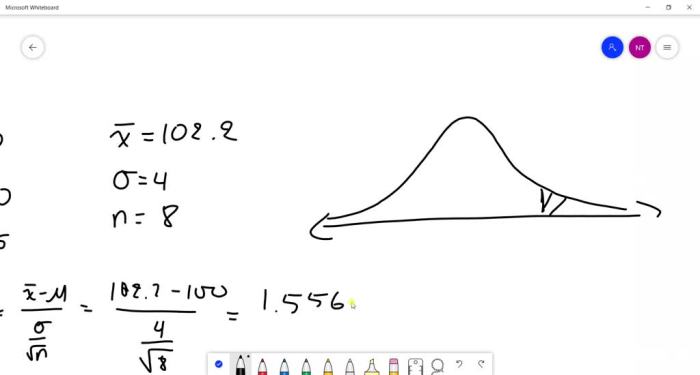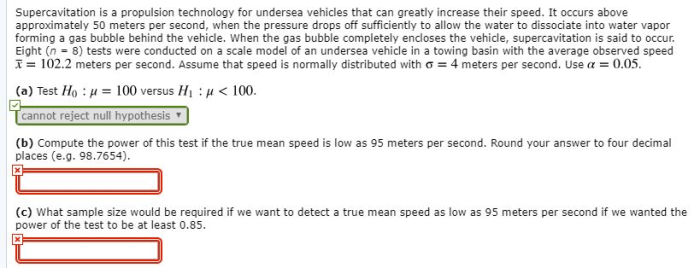Supercavitation is a propulsion technology for undersea vehicles – Supercavitation, a cutting-edge propulsion technology, has revolutionized the realm of undersea vehicles. By creating a vapor-filled cavity around the vehicle’s hull, supercavitation enables unprecedented speeds and maneuverability, opening up new possibilities for underwater exploration, military operations, and commercial applications.
This technology involves the formation of a low-pressure region around the vehicle’s hull, causing the surrounding water to vaporize and create a cavity. The vehicle is then propelled by the pressure difference between the cavity and the surrounding water.
Supercavitation: A Propulsion Technology for Undersea Vehicles

Supercavitation is a propulsion technology that utilizes the principles of cavitation to reduce drag and increase the speed of underwater vehicles. By creating a vapor-filled cavity around the vehicle’s hull, supercavitation allows it to travel through water with significantly reduced resistance.
Examples of vehicles that utilize supercavitation include high-speed torpedoes, submarines, and research vessels. The Russian Shkval torpedo, for instance, is capable of speeds exceeding 200 knots (370 km/h) thanks to its supercavitating design.
Principles of Supercavitation

Supercavitation occurs when the pressure around a moving object in a liquid falls below the vapor pressure of the liquid. This causes the liquid to vaporize, forming a cavity of vapor around the object.
In the context of underwater propulsion, supercavitation is induced by a specially designed hull shape that generates a pressure gradient around the vehicle. As the vehicle accelerates, the pressure on its surface decreases, leading to cavitation and the formation of a vapor cavity.
The cavitation number (σ) is a dimensionless parameter that quantifies the likelihood of cavitation occurring. It is defined as the ratio of the static pressure outside the vapor cavity to the dynamic pressure of the fluid flowing around the object.
Design Considerations: Supercavitation Is A Propulsion Technology For Undersea Vehicles
The design of supercavitating vehicles presents several challenges, including:
- Hull shape optimization:The hull shape must be carefully designed to generate the desired pressure gradient and minimize drag.
- Propulsion system design:The propulsion system must be able to operate efficiently in the presence of a vapor cavity.
- Control mechanisms:Control mechanisms are essential for maintaining stability and maneuverability of the vehicle in the supercavitating regime.
Performance Characteristics
Supercavitation propulsion offers several performance advantages over conventional underwater propulsion systems:
- Increased speed:Supercavitation significantly reduces drag, allowing vehicles to achieve higher speeds.
- Improved efficiency:The vapor cavity reduces the wetted surface area of the vehicle, resulting in reduced frictional drag and improved propulsive efficiency.
- Enhanced maneuverability:The vapor cavity can act as a cushion, improving the vehicle’s maneuverability and reducing its susceptibility to hydrodynamic instabilities.
Applications and Limitations

Supercavitation technology has potential applications in various fields:
- Military:High-speed torpedoes, submarines, and underwater drones.
- Commercial:High-speed underwater transport vehicles.
- Scientific:Research vessels for exploring extreme underwater environments.
However, supercavitation also has limitations:
- Noise generation:The collapse of the vapor cavity can generate significant noise, which can be a disadvantage in stealth applications.
- Material degradation:The high-speed flow and cavitation can cause erosion and damage to the vehicle’s materials.
- Limited depth:Supercavitation is less effective at greater depths due to the increased pressure.
Future Developments

Ongoing research and advancements in supercavitation technology aim to address its limitations and expand its applications:
- Noise reduction:New hull designs and cavitation suppression techniques are being developed to reduce noise generation.
- Material improvements:Advanced materials are being investigated to withstand the harsh conditions of supercavitation.
- Depth extension:Research is exploring methods to extend the operational depth of supercavitating vehicles.
These developments hold promise for further advancements in supercavitation technology, unlocking its full potential for high-speed underwater propulsion.
FAQ Overview
What are the advantages of supercavitation propulsion?
Supercavitation propulsion offers several advantages, including significantly increased speed, improved efficiency due to reduced drag, and enhanced maneuverability.
What are the challenges associated with supercavitation technology?
Supercavitation technology faces challenges such as the need for high power input, the generation of noise and vibrations, and the potential for cavitation damage to the vehicle’s hull.
What are the potential applications of supercavitation technology?
Supercavitation technology has potential applications in military, commercial, and scientific fields, including the development of high-speed underwater vehicles for military operations, commercial transportation, and deep-sea exploration.